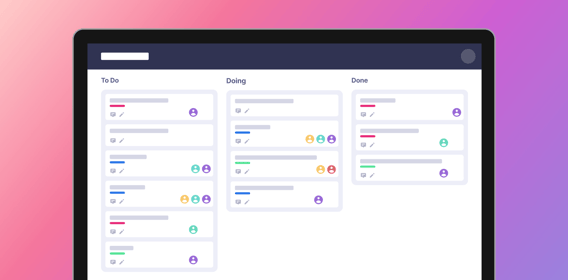Want to learn about the top project management tools and software on the market?
In this post, you'll learn:
- What project management tools are and why companies use them
- Common project management software features
- The most popular, traditional project management platforms and tools on the market — including Monday, Asana, ClickUp, Trello, or Smartsheet
- Why many teams struggle to consistently use project management tools
- A newer, more automated alternative to traditional project management tools
And more!
Let's get started.
What are project management tools and software?
Project management tools and software help you plan, execute, and track your projects. They are typically used by project managers, bosses, and employees to stay organized and on track.
Why do teams use project management tools?
Teams use project management tools to communicate, collaborate, and stay organized digitally. They can help bosses understand what their team is working on and employees keep track of their priorities.
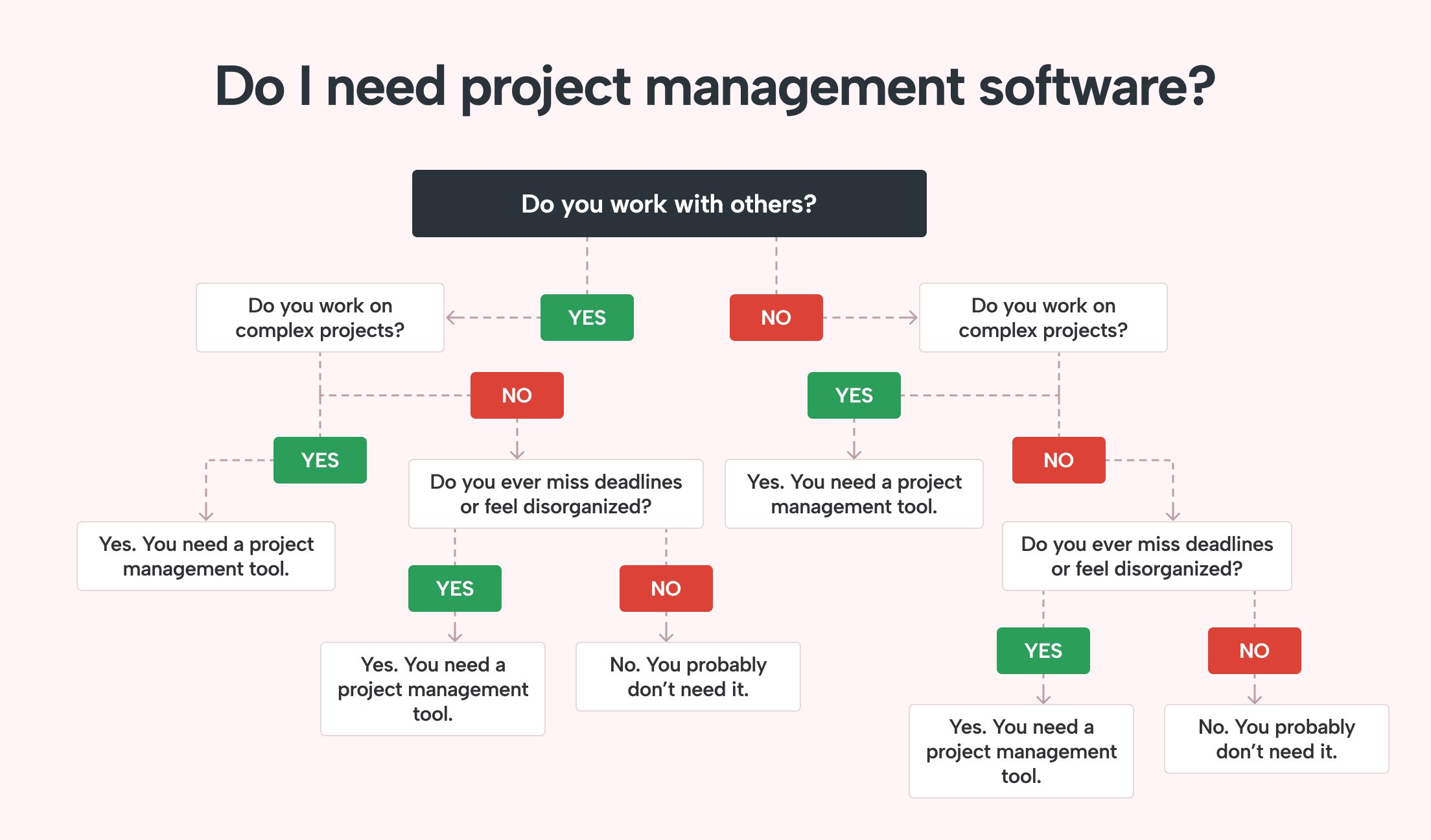
Key features of traditional project management tools
These are the primary features that top project management platforms offer:
Task and project management
Project management tools should give you one place to create, store, and arrange tasks and projects.
Project planning and scheduling
A good project management software will allow you to plan and schedule complex projects by adding deadlines, start dates, assignees, and blockers.
Comments and communication
Most tools offer features for teams to collaborate and communicate, like a comments section for tasks and projects and email — and even Slack — notifications to inform team members when a task is completed or updated.
File sharing and notes
To keep everything in one place, many project management tools will allow users to attach files and keep detailed notes within each task and project.
Reports
Project management reports can show project progress, time spent on projects, and other details about tasks and projects.
Project and task labeling
With labels, project managers, bosses, and employees can organize, group, and find tasks and projects by labels.
5 popular project management tools
Curious what traditional tools you can use for project management? Here are 5 common ones...
Monday.com
Monday is a project management tool that helps teams plan and execute their projects. It features a drag-and-drop interface, so you can easily add tasks and subtasks. Monday also offers Gantt charts to help you visualize your project timeline.
Monday.com's website says the platform is built for a new way of working.
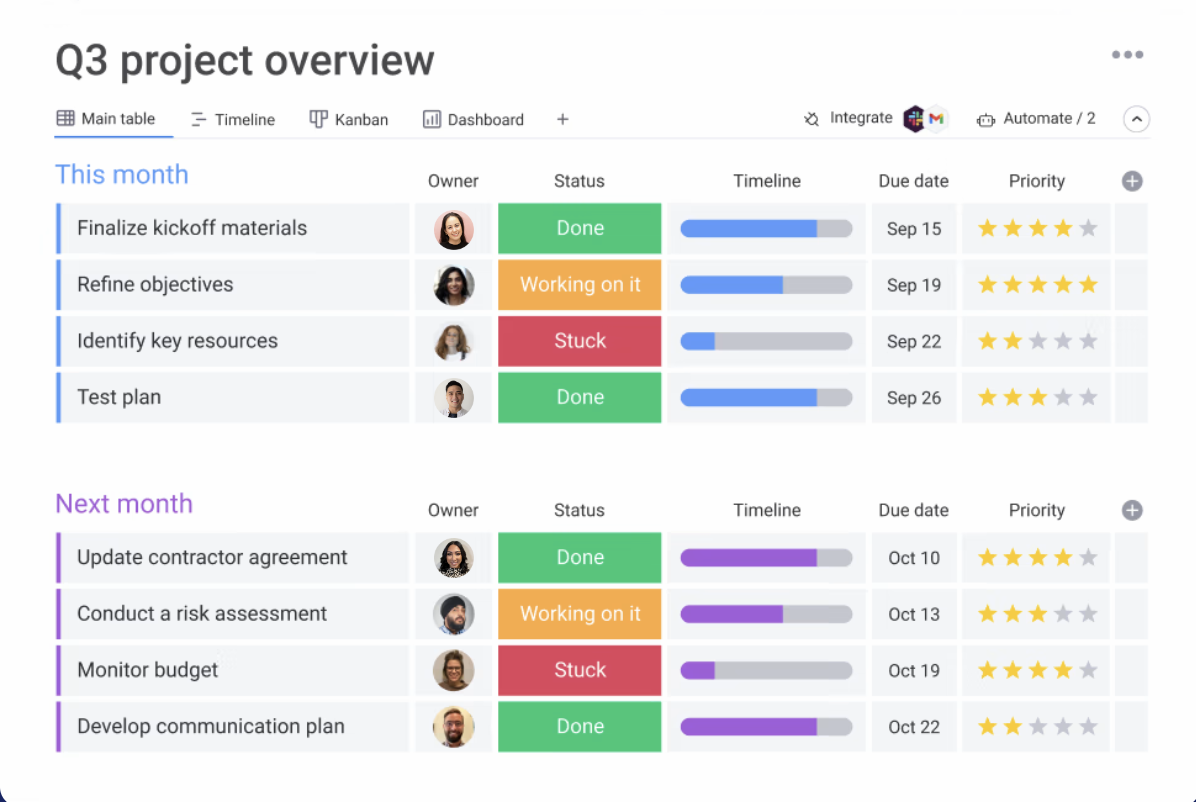
Asana
Asana is a project management tool that helps teams track their work progress. It features task lists, Kanban boards, and calendars to help you stay organized. Asana also integrates with other tools, such as Slack, so you can receive notifications of project updates right inside Slack.
On Asana's website, they claim Asana helps team stay organized and connected.
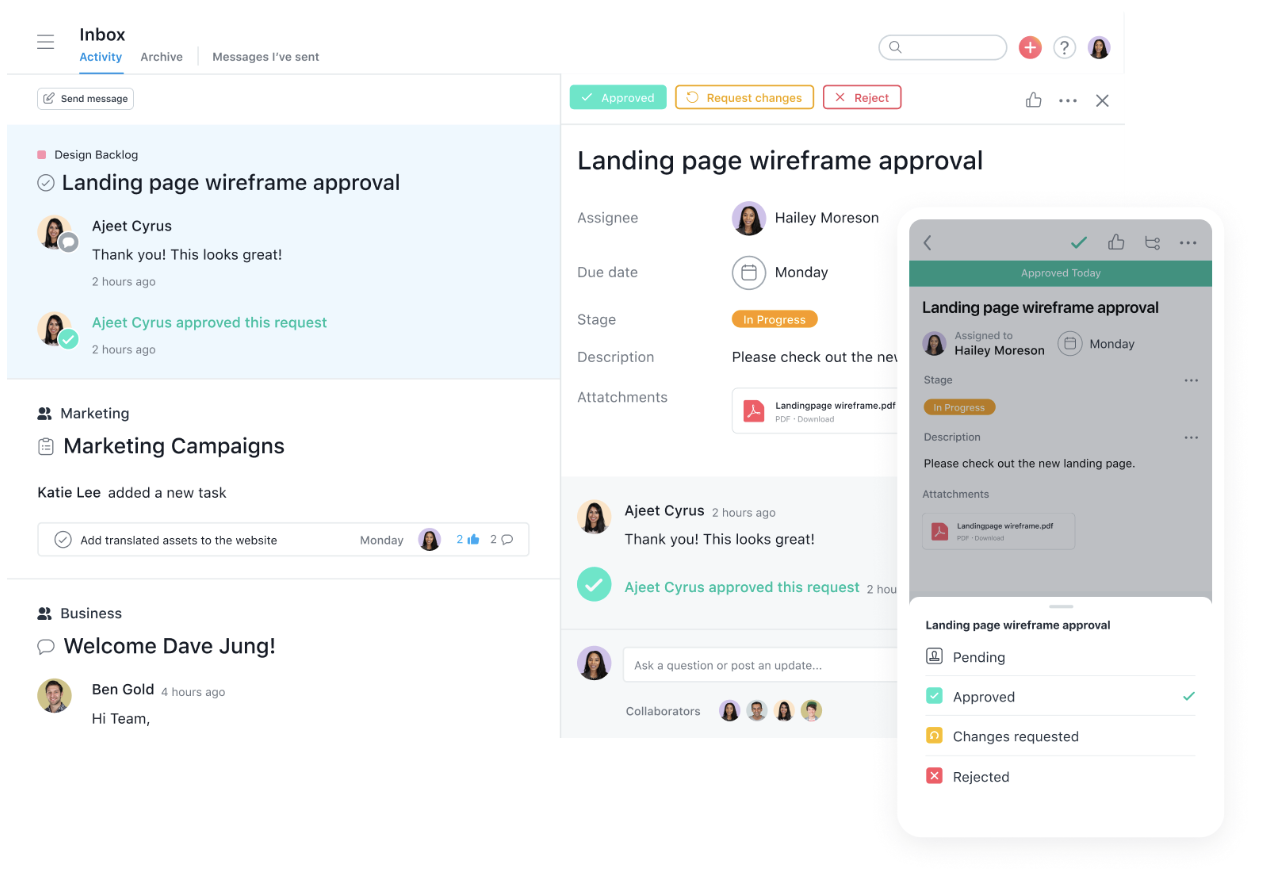
ClickUp
ClickUp is a project management tool that helps teams manage their projects and tasks. It features task lists, documents, goals, kanban boards, gantt charts, and calendars to help you stay organized. ClickUp also offers a wide range of integrations, so you can connect it to other tools you use.
On their website, ClickUp says they're, "One app to do it all."
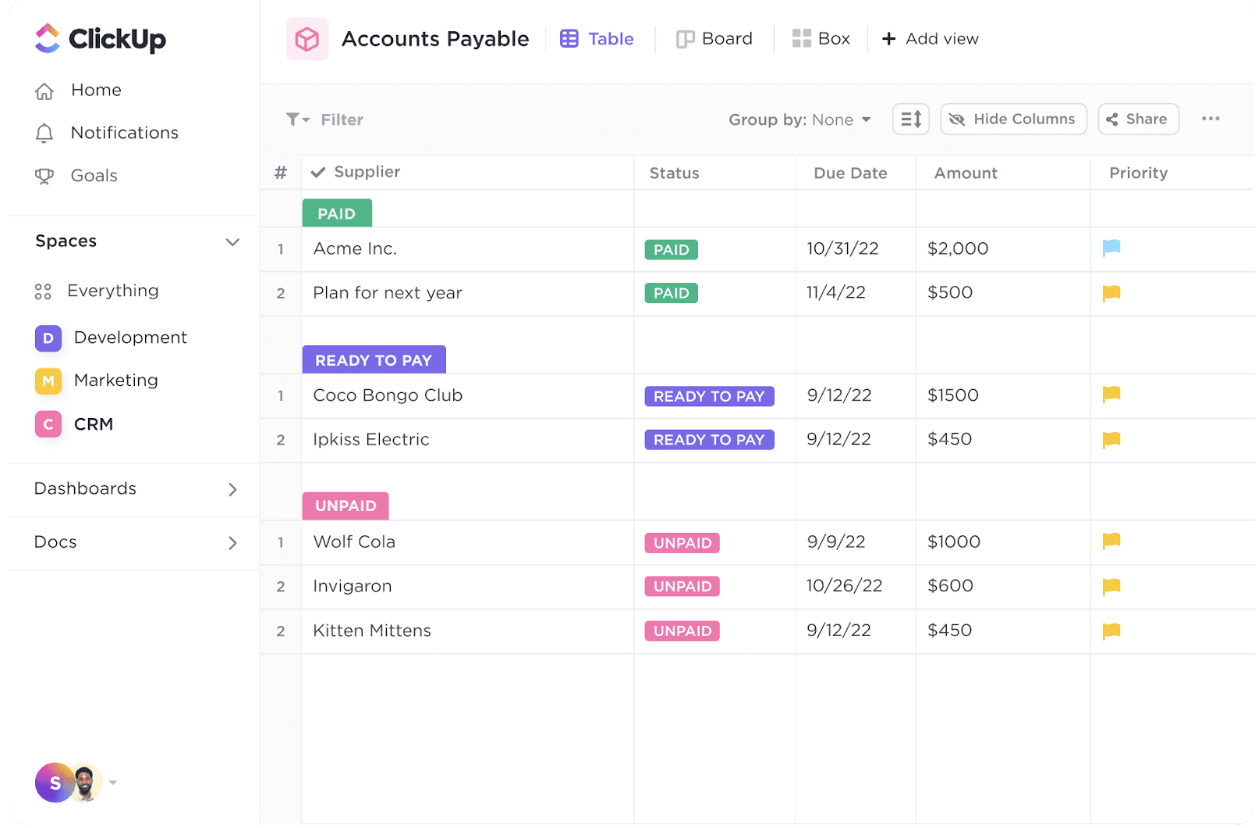
Trello
Trello is a project management tool that helps teams track their work progress. It features kanban boards and card views to help you stay organized. Trello also integrates with other tools, such as Slack.
On their website, Trello highlights how they're customizable, so teams can work the way they want.
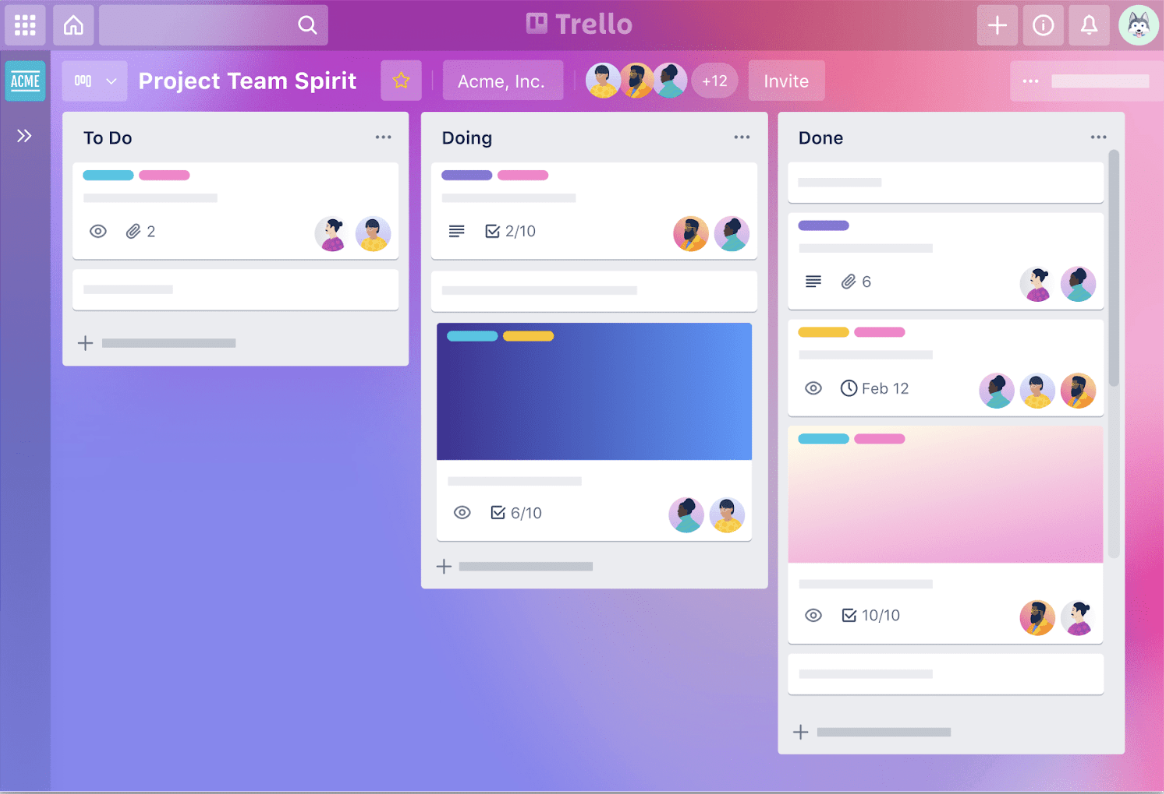
Smartsheet
Smartsheet is a project management tool that helps teams plan and execute their projects. It features task lists, Gantt charts, and calendars to help you stay organized. Smartsheet also offers a wide range of integrations, so you can connect it to other tools you use.
Smartsheet, on their website, says they're a "modern work management" tool.
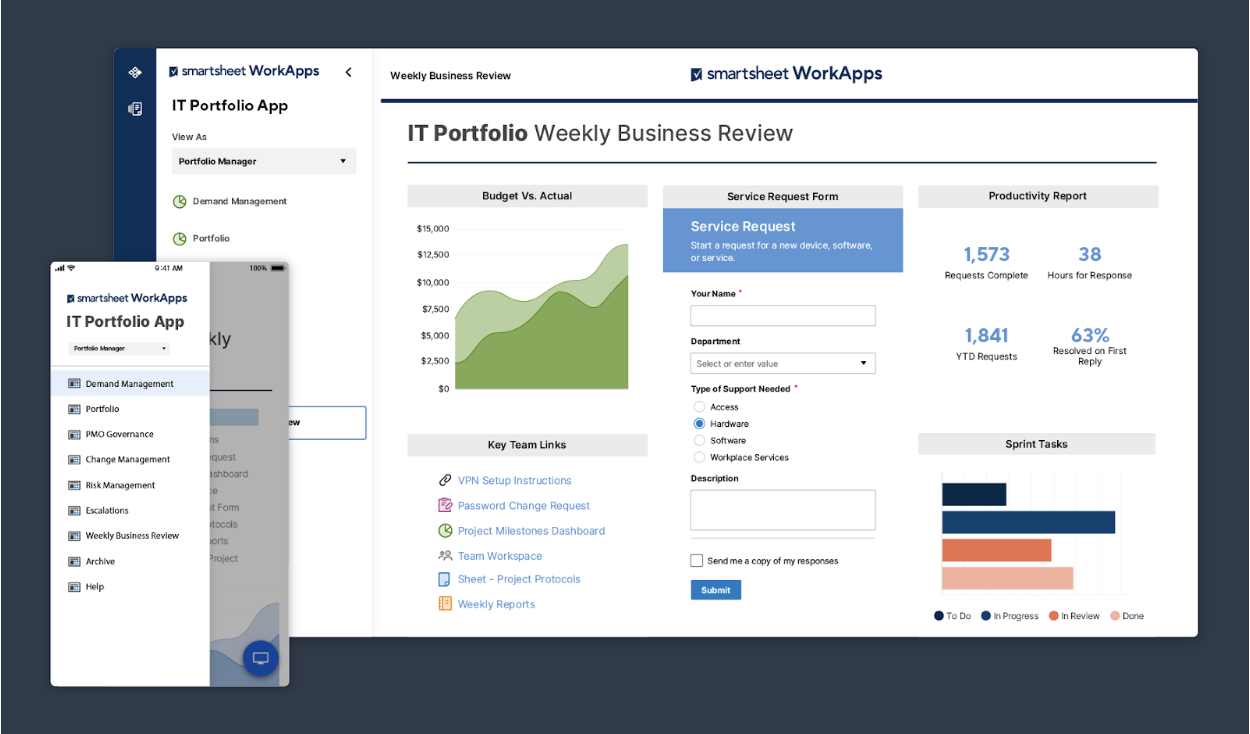
While these project management tools can be helpful, they also have their drawbacks. In the next section, we will discuss the problems with traditional project management tools like Monday, Asana, ClickUp, Trello, and Smartsheet.
The downsides of traditional project management tools
Traditional project management tools have a number of drawbacks that can make them more trouble than they're worth. Here are some of the most common problems...
They require too much manual updating and prioritization.
With traditional project management tools — like Asana, Monday, and ClickUp — you must manually manage and update your tasks and projects.
On top of that, once you add tasks and projects inside these tools, your team has a long, and sometimes overwhelming list of things to do. Project management tools don't prioritize tasks for employees, so they must manually prioritize each task.
This leaves room for error, as employees may incorrectly prioritize their work and focus on easy tasks, over challenging ones.
Related: The To-Do List Is Dead. There’s a Better Way to Plan Your Day (And It Can Triple Your Productivity)
You often still need progress update meetings.
Project management tools are essentially better-looking, easier-to-use spreadsheets. They store data — like projects, tasks, and deadlines.
Again, they don't actually prioritize work or help employees decide what to work on next. As a result, managers often need to schedule regular stand-up or progress meetings to update their team on high-priority projects and ensure employees are actually working on the highest priority work.
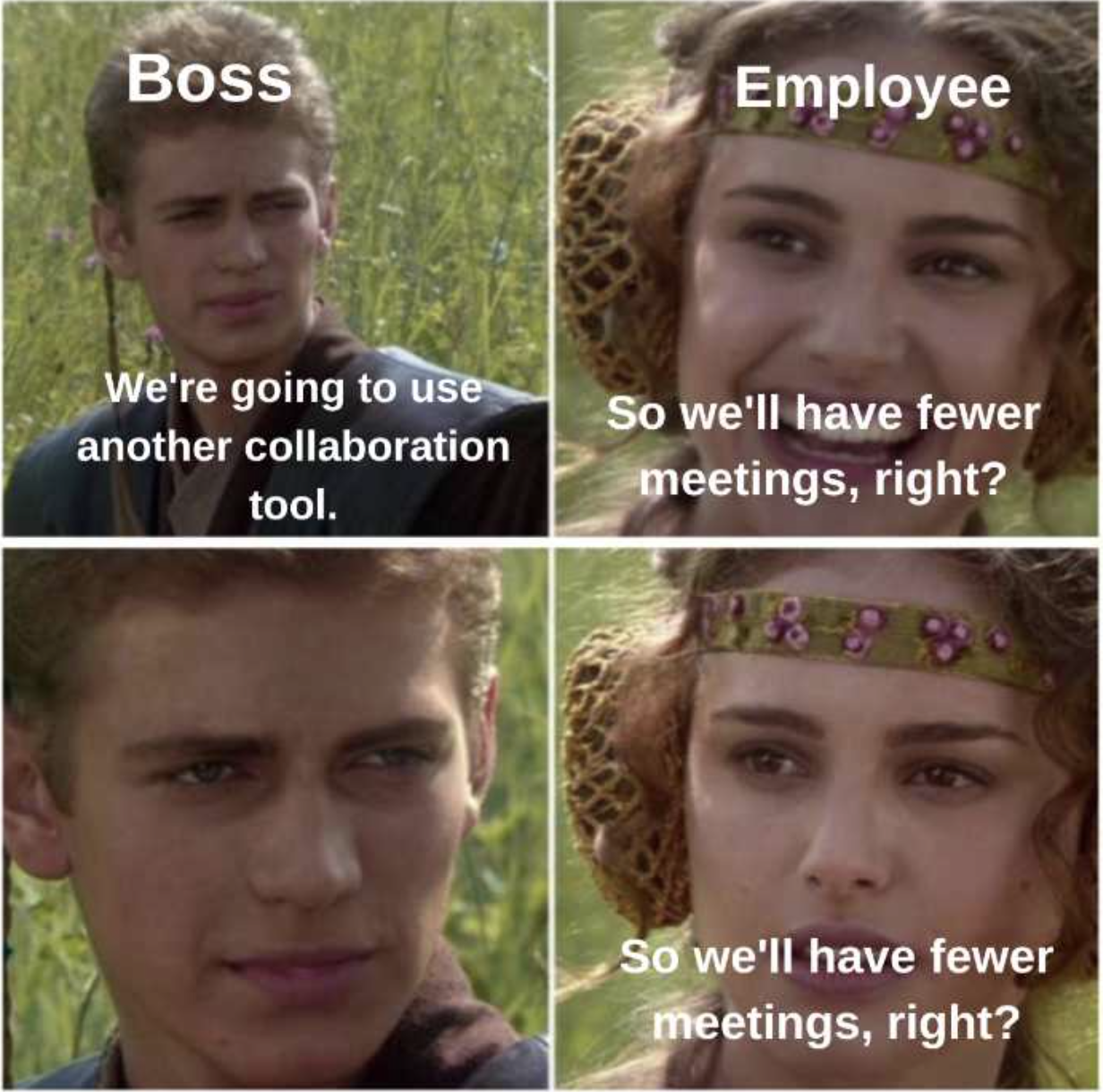
You micromanage your team.
Since you need to constantly check in on people's progress and priorities, it's easy to micromanage your team. This can lead to a feeling of being constantly under pressure and can be very demotivating.
Related: The Dangers of Micromanagement: What Is It and How Bosses Can Stop Doing It
Teams don't regularly use or update them.
Talk to most project managers who spent days or even weeks setting up a project management platform for their team, and they'll relay a common frustration. Most of the team doesn't use or update the project management platform.
This lack of usage can happen for a few reasons:
- Project management tools are siloed from the other time management tools your team uses. So they need to develop a new habit of using the tool and continuing to update it. Developing a new habit like this can be difficult.
- Often, project management tools don't actually contain the most up-to-date info on a project, because people forget to update them. So employees learn they can't rely on the platform and stop checking it.
- Employees have their own project management teams that they prefer to use.
Your team must use multiple tools for organization.
We touched on this earlier, but typically, individuals on your team will already have their own time management and task management tools — like a digital calendar and to-do list app.
Related: Stop Using To-Do List Apps Like Todoist, Tick Tick and Any.do. Here’s Why.
Forcing them to use a project management platform adds yet another place where they need to track their work and time. And knowledge workers already spend 58% of their day coordinating work, instead of doing work.
How to increase your team's productivity and organization with the AI-powered project and time management platform — Motion
is a project management tool that is designed to help you solve the problems we just listed. Here's how:
Motion uses AI to prioritize work and build schedules for your team.
Traditional project management platforms simply store projects and tasks — leaving employees with the work of prioritizing everything.
Motion's machine learning algorithms actually prioritize these tasks and projects for employees — based on factors like due date, start date, priority, and scheduled meetings — so your team always know which task they should work on next.
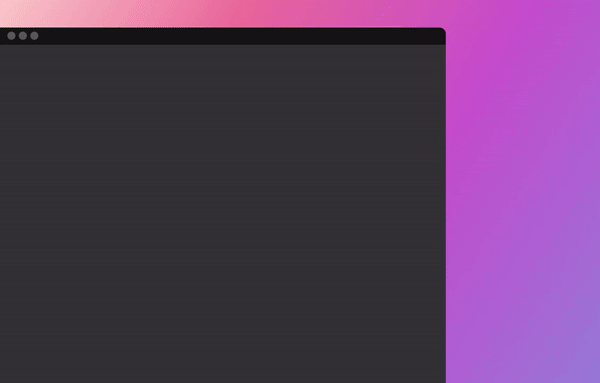
Motion shifts work when priorities change
Once Motion has built a schedule for everyone on your team, the AI doesn't stop there.
When your employees' priorities change — due to last-minute meetings, urgent tasks, work fires, or personal emergencies — Motion rebuilds their daily schedule, taking into account the work and meetings that are most urgent and important.
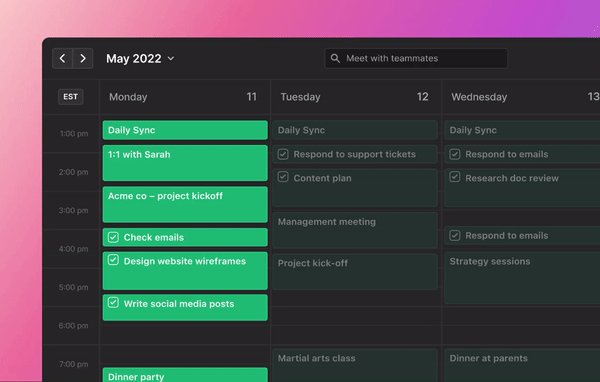
Motion gives everyone on your team one central place to manage their time and work.
The one tool nearly every knowledge worker naturally uses throughout the day?
Their calendar. Motion replaces your team's Google and Apple calendars with a smart calendar that handles their tasks and meetings.
Because nearly everyone already uses a digital calendar, you don't need to form a new habit or update yet another tool to get your team to use Motion's calendar.
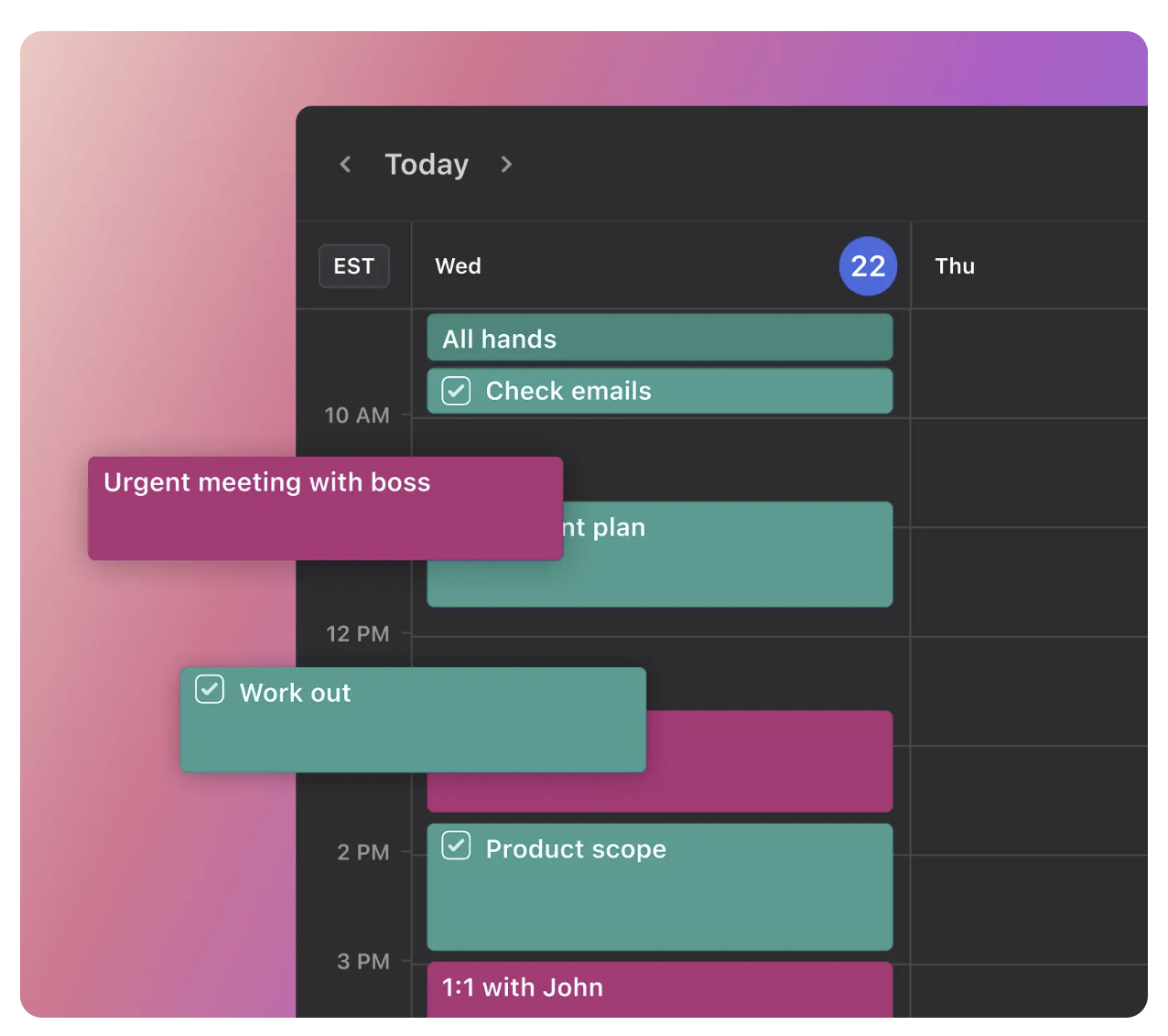
Motion schedules meetings for your team.
Motion also replaces tools like Calendly by giving everyone on your team a custom meeting booking page to easily schedule meetings.
On top of that, Motion can automatically move non-urgent meetings when a more urgent task or meeting pops up.
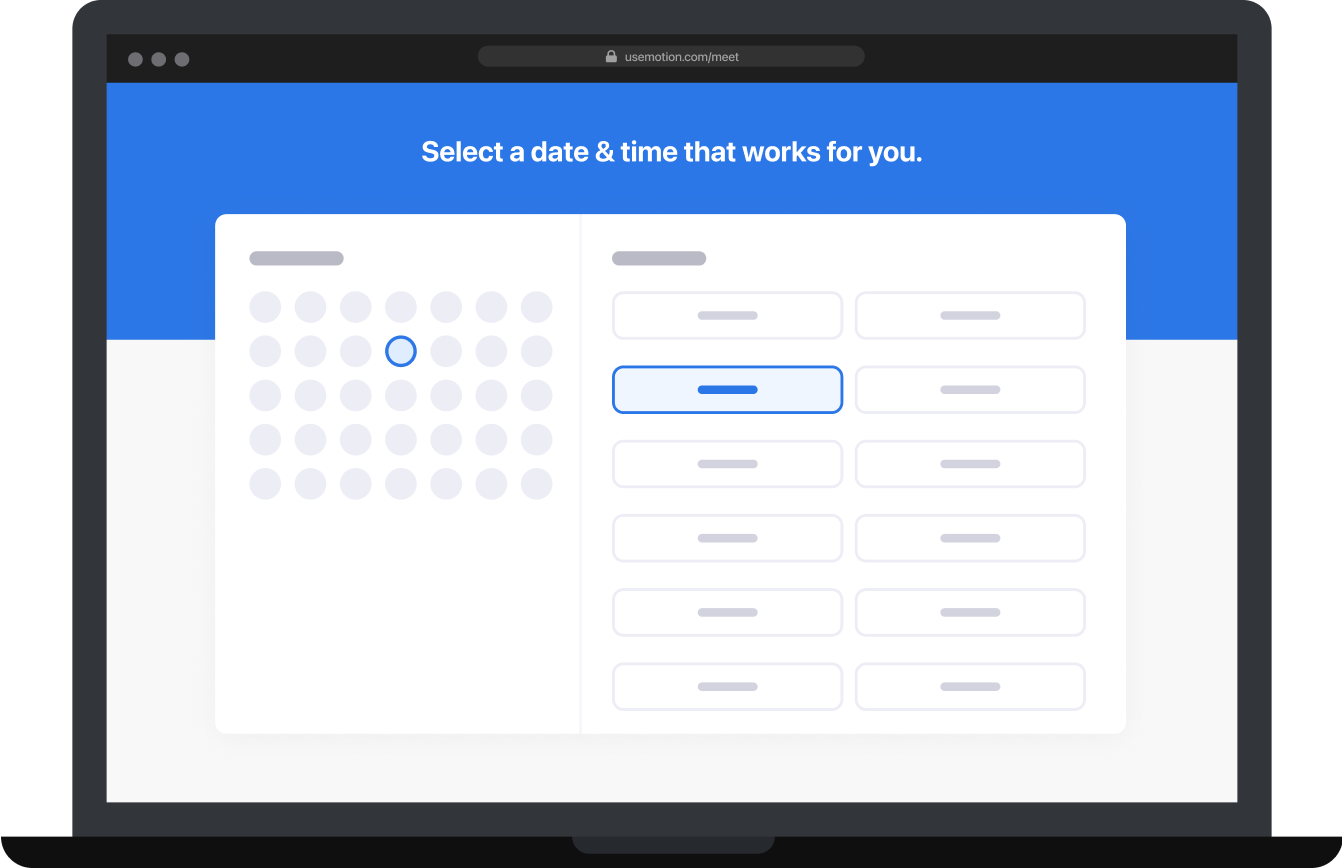
Motion shows you when your team is stuck in too many meetings or overworked.
Motion gives a simple breakdown of each team member's weekly meetings and tasks. So you can easily see when employees are overcommitted, overworked, or stuck in too many meetings.
Most project management platforms can't do this, because they don't track your employee's meetings at all.
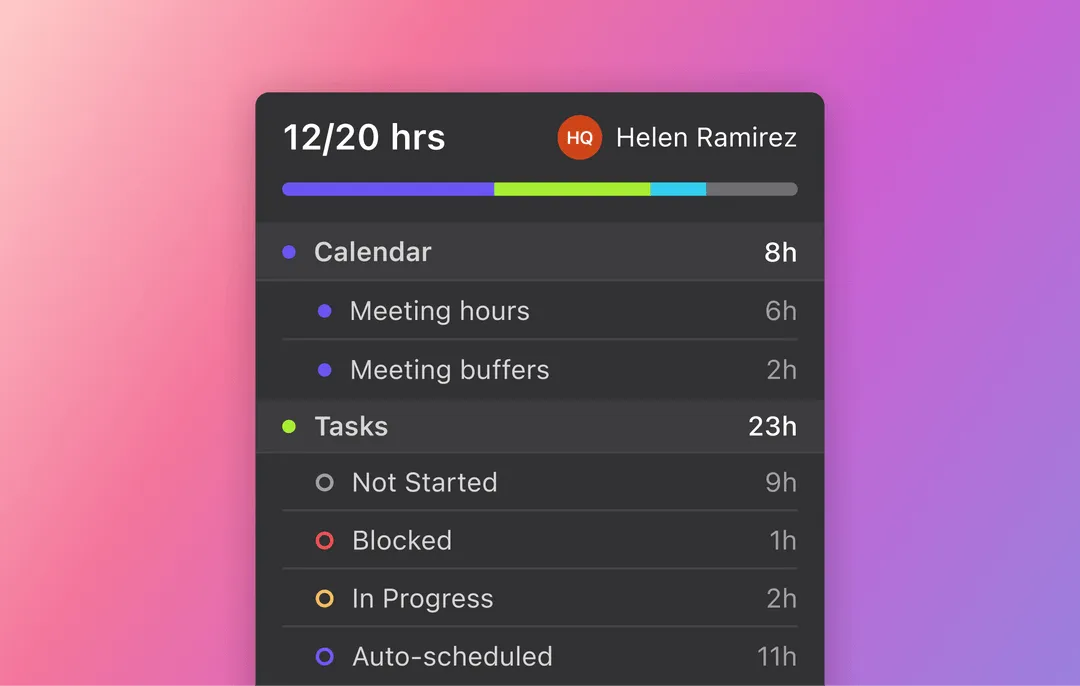
Motion applies productivity strategies when building your team's schedule.
Using AI, Motion will apply 2 productivity strategies:
- Time blocking: Motion can block (reserve) time on your team's calendar to do work. Studies show that time blocking can triple your productivity.
- Deep work: Motion can reserve chunks of time on your team's calendar for difficult focus work. This way, no one can book meetings at those times and eliminate your team's ability to finish difficult work. Productivity pro Cal Newport recommends reserving chunks of time for focused work in his best-selling book Deep Work. He says, “To produce at your peak level you need to work for extended periods with full concentration on a single task free from distraction. Put another way, the type of work that optimizes your performance is deep work.”
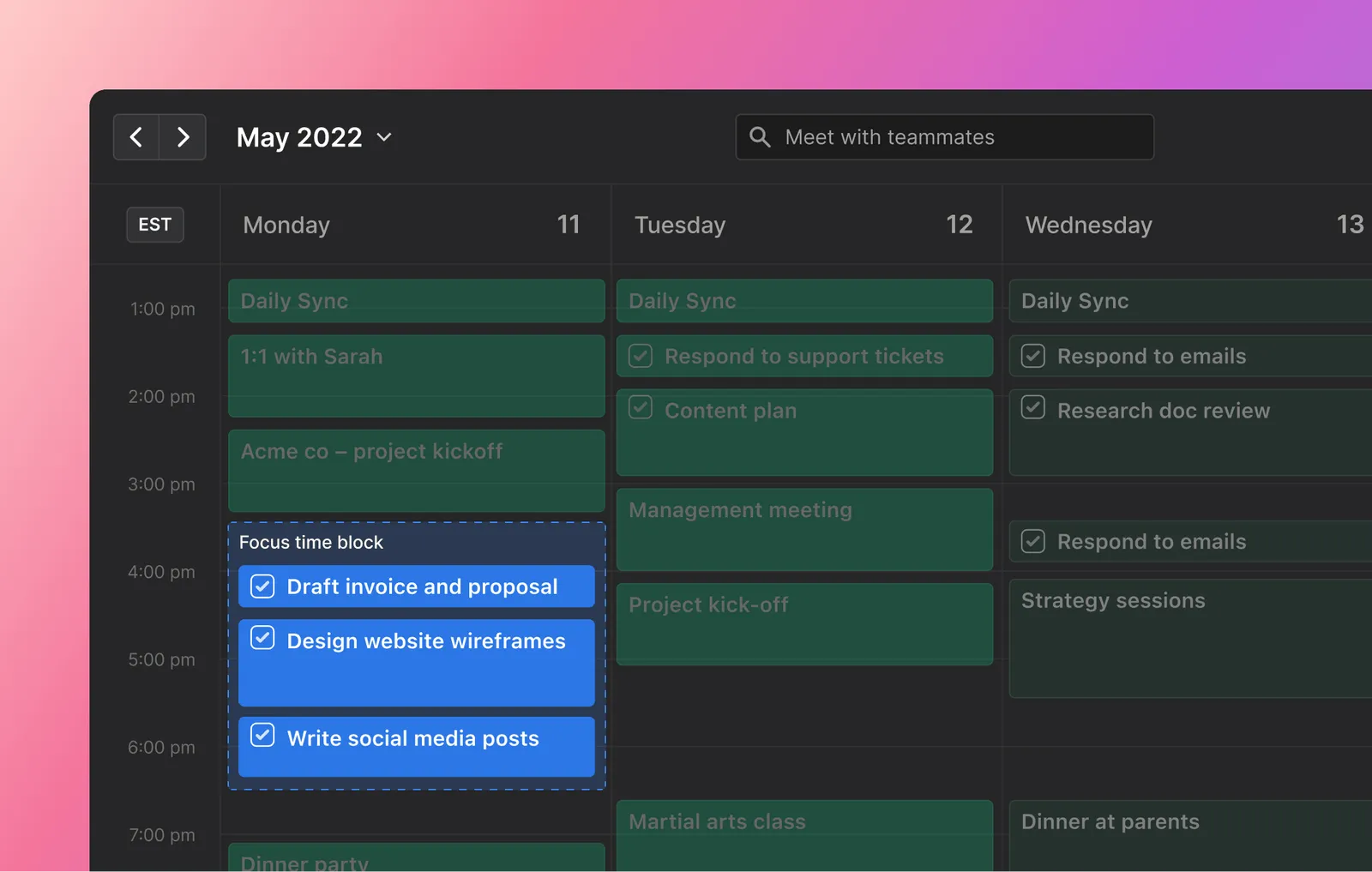
Motion has all the core features of traditional project management platforms.
Motion also has everything you'd expect in a project manager — including reporting and integrations with Zapier and Slack.
In conclusion, Motion is a better solution for project management because it automates many of the tasks that traditional project management tools require you to do manually. This saves your team's time and allows them to focus on actually doing work.
Try Motion free for 7 days
If you'd like to give Motion a try, grab a 7-day free trial here.

